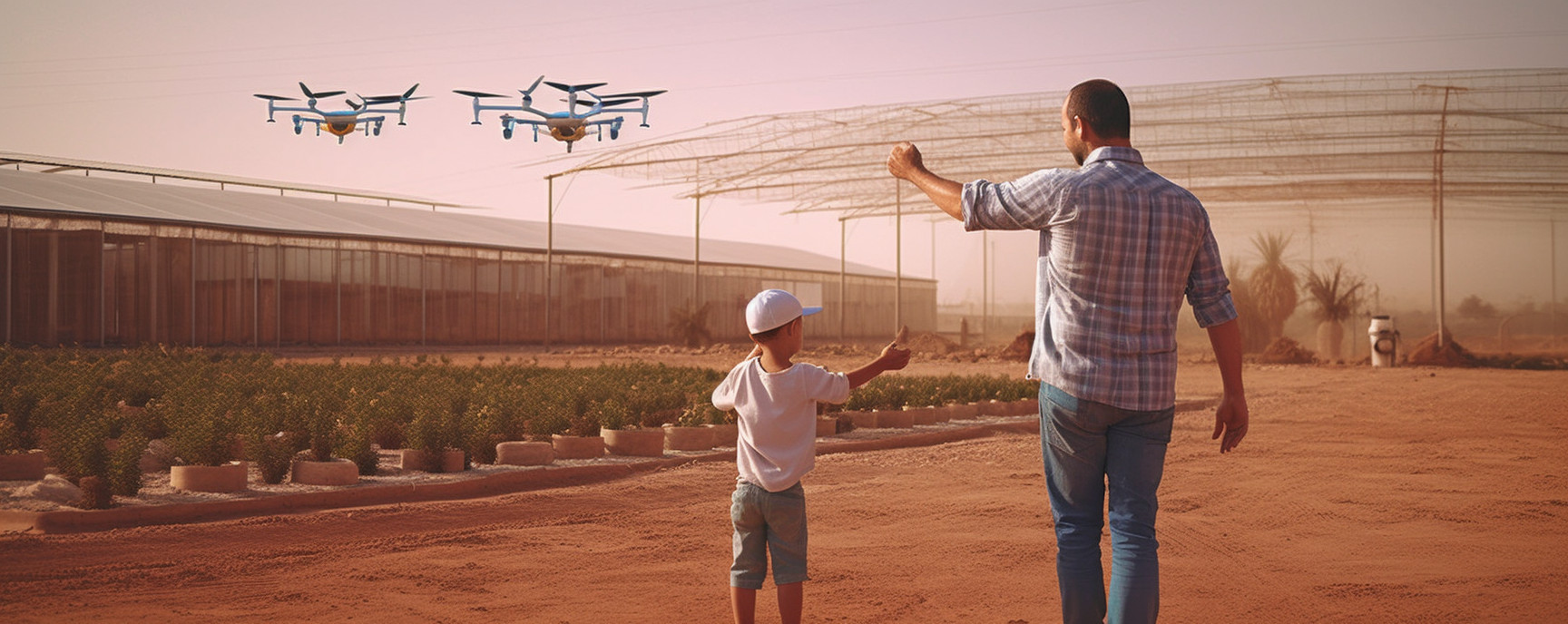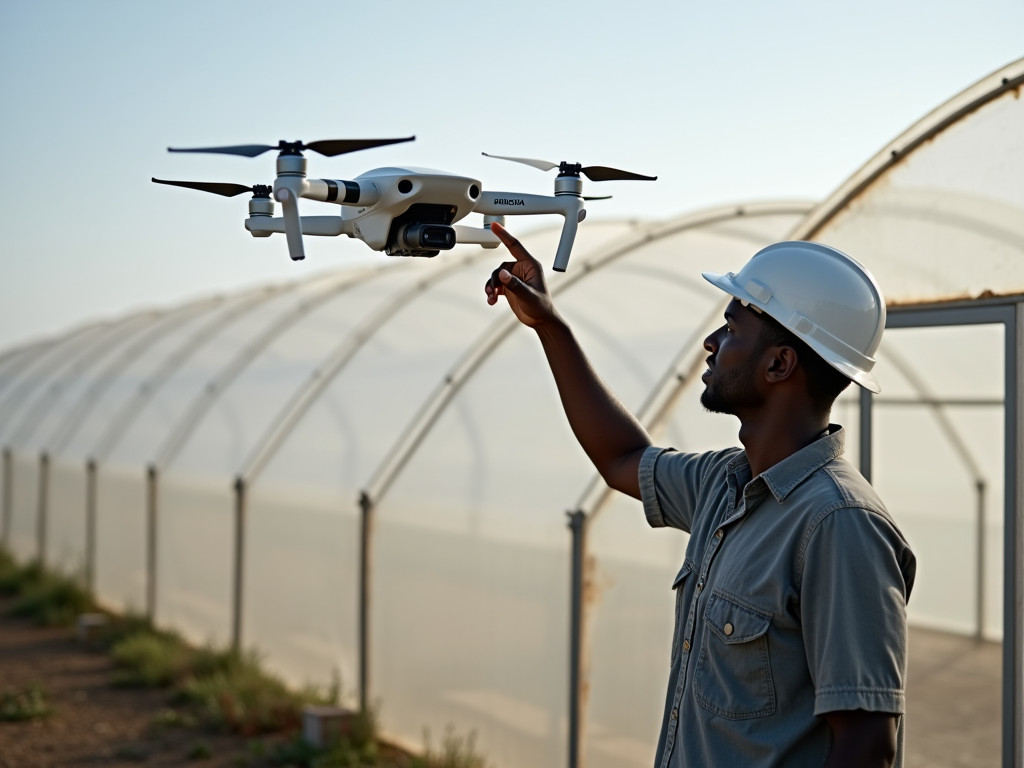
Greenhouse Drone Cleaning
Sustainable Maintenance for Agriculture with AIr™
Greenhouses are vital for agriculture, particularly in arid regions where controlled environments enable crop growth despite harsh climates and water scarcity. However, maintaining these structures—especially keeping their surfaces clean—can be challenging. Dust and debris accumulate on glass or plastic coverings, reducing sunlight penetration and disrupting temperature control.
Traditional cleaning methods often rely on water-intensive processes or manual labor, which can damage delicate surfaces and increase operational costs. AIr™ (formerly Aerial Power) offers a revolutionary solution: drone airflow cleaning technology that is efficient, waterless, and eco-friendly.

How AIr™ Drone Technology Works
AIr™ drones use airflow generated by their propellers to lift dust and debris from surfaces without physical contact or water. This non-tactile cleaning method has been successfully applied to solar panels, building facades, and windows — and now greenhouses.
Greenhouse surfaces vary widely in material and function:
- Frosted Glass: Diffuses light to prevent hotspots.
- Tinted Glass: Manipulates the light spectrum to enhance plant growth.
- Plastic Films: Lightweight yet durable coverings that protect crops from environmental stressors.
Regardless of surface type, dust accumulation interferes with their intended properties. AIr™ drones adapt to these differences by delivering precise airflow cleaning tailored to each surface’s requirements.
The Importance of Clean Greenhouse Surfaces
Sunlight is essential for photosynthesis and healthy crop growth in greenhouses. Dust-covered surfaces reduce light penetration, slowing plant growth and lowering yields. AIr™ drones create a downdraft that lifts dust and debris off greenhouse surfaces, restoring optimal sunlight exposure while maintaining stable internal temperatures.
This is particularly impactful in regions like Almeria, Spain — home to Europe’s largest concentration of greenhouses — where frequent dust storms can severely affect light availability inside greenhouses. By keeping surfaces clean, AIr™ drones can help maximize crop productivity even under harsh environmental conditions.
Extending the Lifespan of Plastic Greenhouse Coverings
Greenhouses often use plastic films as lightweight coverings to protect crops. However, regular exposure to dust, debris, and environmental stress can degrade these surfaces over time, leading to frequent replacements. Disposal of damaged plastic coverings contributes to environmental waste and increases operational costs for greenhouse operators.
AIr™ drone cleaning technology helps extend the lifespan of plastic planes by providing non-contact cleaning that avoids physical damage. Unlike manual or mechanical methods that risk scratching or tearing plastic films, AIr™ drones use precise airflow to lift dust and debris without abrasion.
Environmental Benefits:
- Reduced Waste: Preserving plastic coverings for longer periods reduces landfill contributions from discarded films.
- Lower Resource Consumption: Extending the life of plastic planes reduces demand for new materials, supporting sustainable resource management.
- Minimized Environmental Impact: Preventing damage during cleaning helps avoid harmful microplastics entering ecosystems when disposed of improperly.
By integrating AIr™ drone cleaning into greenhouse maintenance routines, operators can ensure cleaner surfaces while promoting environmental sustainability—reducing waste and lowering operational costs.
Advancing Sustainable Agriculture
Even minor reductions in sunlight due to dust can significantly impact photosynthesis and crop yields. AIr™ drone technology offers a scalable solution for greenhouse maintenance that supports sustainable agriculture in arid regions. By combining frequent drone-based cleaning with occasional manual wet cleaning, greenhouse operators can maintain cleaner surfaces year-round—enhancing light penetration, promoting healthier crops, reducing resource consumption, and minimizing waste.
